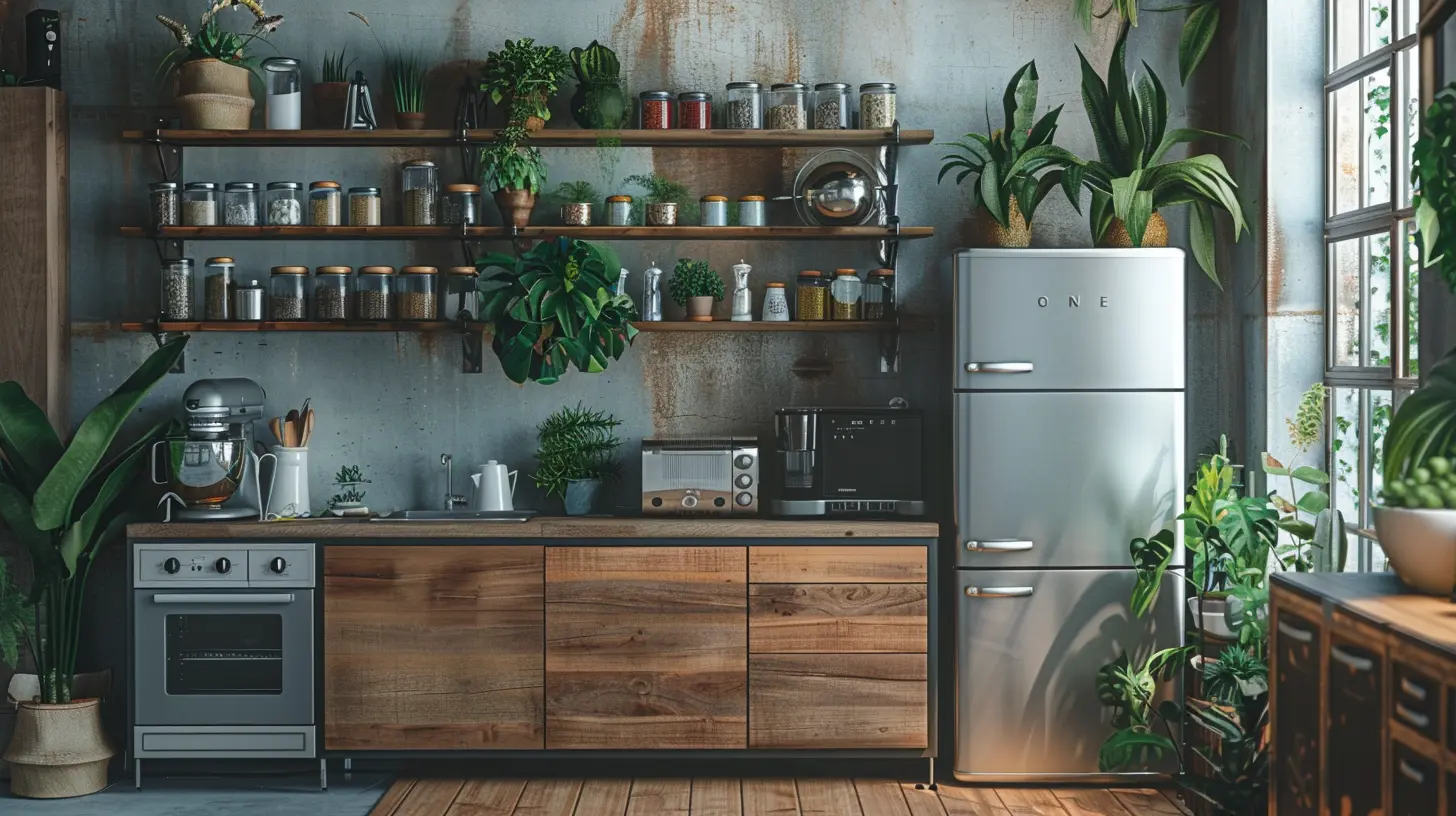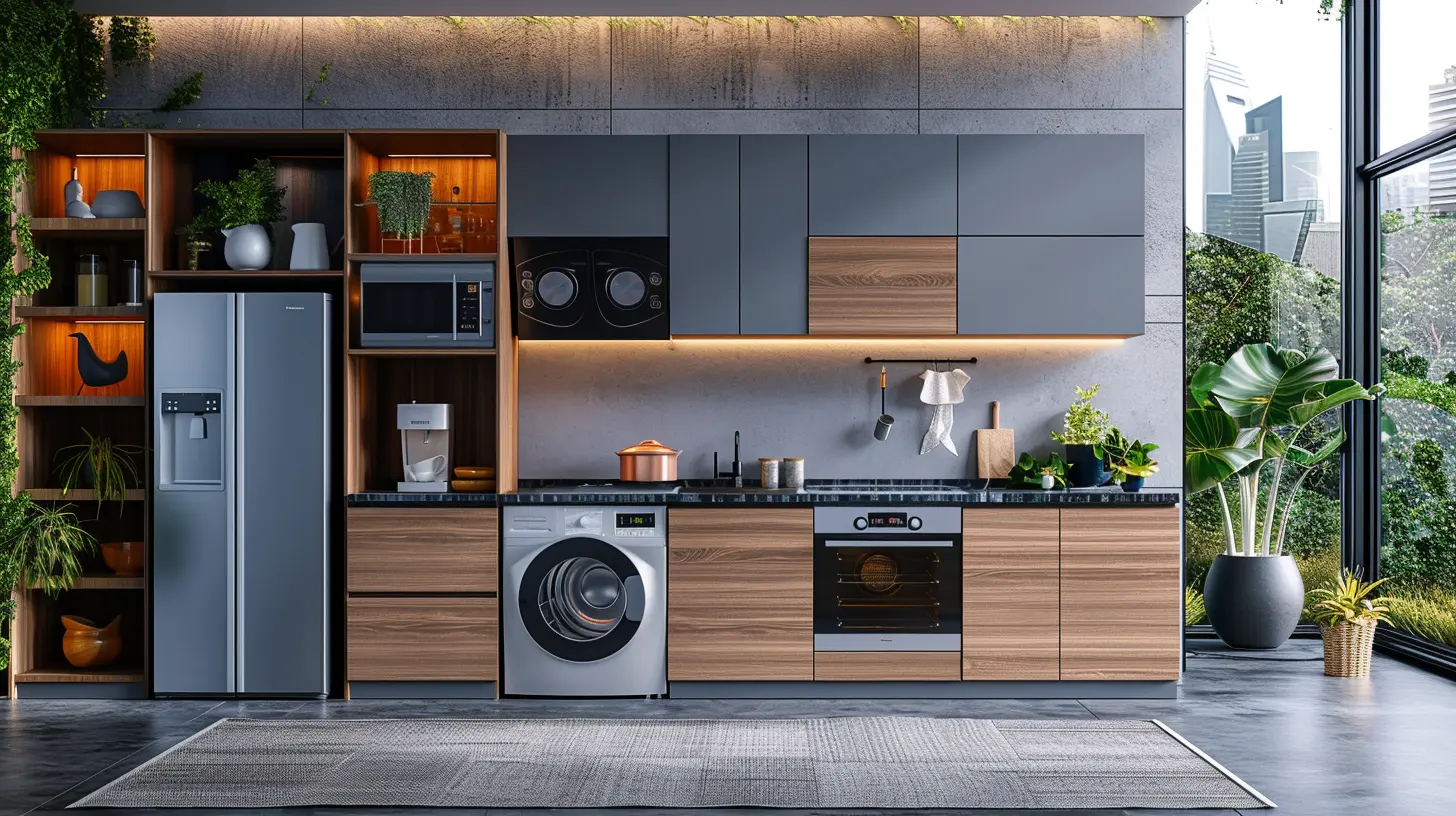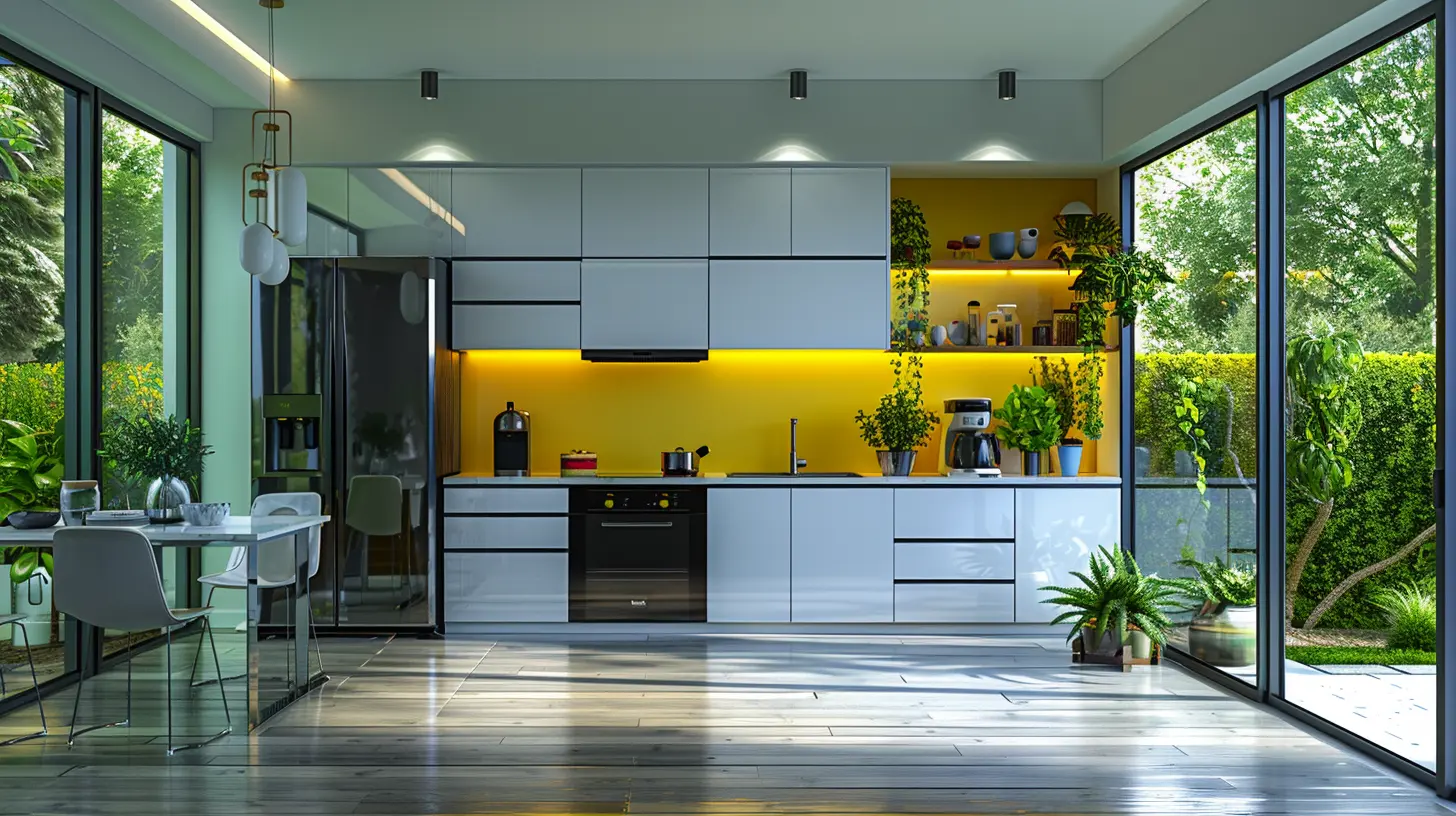The Evolution of Energy-Efficient Appliances for a Greener Home
10 November 2025
It wasn’t too long ago that home appliances were guzzling electricity like there was no tomorrow. Think back to those clunky old fridges, power-hungry heaters, or washers that made your electricity bill look like a phone number. Fast forward to today, and we’re living in a whole new world—one where "energy efficiency" isn't just a marketing buzzword but a lifestyle choice for many homeowners.
So, how did we get here? What sparked the shift toward greener, smarter appliances? And what does it really mean for your home—and the planet? Let’s break it down.
The Not-So-Green Beginnings
Let’s set the stage. For most of the 20th century, the focus of appliance design was convenience and performance. People wanted their homes to be modern, automatic, and fast. Few gave much thought to how much energy a washer or a space heater burned through. After all, energy was cheap, and climate change wasn’t exactly dinner table conversation.The Cost of Convenience
But that convenience came at a price. Older appliances were energy hogs. They ran on outdated motors, had no real insulation, and were made with little consideration for environmental impact. A lot of this was due to lack of tech—but also lack of awareness. Green living just wasn’t on the radar.
The Awakening: Welcome to the Energy Crisis
The turning point? The energy crises of the 1970s. Suddenly, the world realized that unlimited cheap energy wasn’t a sure thing. Gas shortages and power outages made people painfully aware of how much energy modern life required.Governments Step In
As a response, governments around the world started passing regulations and creating agencies to monitor and guide appliance energy consumption. In the U.S., the Department of Energy (DOE) and the Environmental Protection Agency (EPA) were right in the thick of it—laying down the groundwork for what would become energy efficiency standards.This was also the beginning of labeling programs like the now-famous Energy Star, which launched in 1992. These labels became the lighthouse for consumers, helping them pick appliances that wouldn’t suck their wallets and the planet dry.
Technology Joins the Party
Once the stage was set, tech innovation did what it does best—disrupt, simplify, and optimize.Smarter Designs, Smarter Homes
Appliance manufacturers started to rethink everything: insulation, motor efficiency, power usage, and even standby modes. Suddenly, refrigerators weren’t just about keeping your food cold—they were doing it with significantly less power.And the real game-changer? Smart tech. With the rise of IoT (Internet of Things), today’s appliances can learn your habits, optimize performance, and even shut themselves off when not in use. Your thermostat knows when you’re home. Your washer can run on off-peak hours. That, friends, is living smart while living green.
The Rise of Sustainable Materials
Let’s not forget what these appliances are made of. Modern energy-efficient appliances also take into account the full lifecycle—from manufacturing to disposal.Green Inside and Out
Manufacturers have begun embracing recycled materials, non-toxic refrigerants, and components designed for longevity. Gone are the days of planned obsolescence—well, almost. Today’s greener appliances are built to last longer, use less, and waste nothing.Now vs. Then: The Efficiency Breakdown
Let’s put this into perspective with a few comparisons between traditional appliances and their modern counterparts.| Appliance | 1980s Model Energy Use | Modern Energy-Efficient Model |
|------------------|------------------------|-------------------------------|
| Refrigerator | ~1400 kWh/year | ~400-600 kWh/year |
| Washing Machine | ~130 kWh/cycle | ~40 kWh/cycle |
| Dishwasher | ~10 gallons/cycle | ~3-5 gallons/cycle |
| HVAC System | SEER rating of 6-8 | SEER rating of 14-25+ |
It’s pretty wild how far we’ve come, right?
Real-World Benefits: More Than Just Saving on Bills
Sure, saving some extra bucks on your electricity bill is a win. But the benefits of energy-efficient appliances go way beyond that.A Smaller Carbon Footprint
By using less energy, these appliances reduce harmful greenhouse gas emissions. Multiply that by millions of households, and you start to see the ripple effect.Improved Home Comfort
Modern appliances often come with advanced features—like better temperature control in fridges or quieter dishwashers—that make your life easier and more comfortable.Increased Home Value
Green homes are in. Energy-efficient upgrades can boost your property value and make it more attractive to eco-minded buyers.What to Look for When Choosing Energy-Efficient Appliances
So, you're sold on the idea. But how do you actually pick the right kind of energy-efficient appliances? Here’s a cheat sheet:Check the Labels
Look for the Energy Star symbol or equivalent certification in your country. These logos aren’t just stickers—they’re a quick way to identify high-performing, energy-saving products.Compare the EnergyGuide
Most appliances come with an EnergyGuide label that gives you an estimated annual operating cost and energy consumption. Use it to compare apples to apples.Consider the Size
Bigger isn’t always better. Oversized appliances can consume more energy even if they’re efficient. Choose the right size for your needs.Look at Lifetime Costs
An appliance might be cheaper upfront but cost more in energy over time. Do the math—sometimes spending a bit more now pays off in the long run.Smart Appliances: The Future is Already Here
This is where things get really futuristic. Smart appliances aren’t just energy-efficient—they’re intelligent.Load Shifting & Demand Response
Some smart washers or HVAC systems can communicate with your utility company and adjust usage based on peak demand. They help balance the grid and save you money.Remote Control & Automation
Control your appliances with your phone, set schedules, and even get alerts when something’s off. Forget to turn off the oven? Handle it from the airport!Predictive Maintenance
Newer models can diagnose themselves and send you alerts before things go wrong. That means fewer breakdowns and less waste.How You Can Make Your Home Greener Today
Not ready to replace everything in your house? No worries. Small shifts can make a big difference.Upgrade Gradually
As your old appliances wear out, swap them for energy-efficient replacements. Prioritize the ones that run the most—like your fridge, HVAC, or water heater.Unplug the Energy Vampires
Even when turned off, devices in standby mode suck electricity (yup, your phone charger is guilty). Use power strips or smart plugs to cut them off.Be Smart With Use
Use cold water for laundry, run full dishwasher loads, and adjust your thermostat by just a few degrees. These little tweaks add up over time.Trends on the Horizon
The evolution isn’t stopping anytime soon. Here are a few green appliance trends to keep an eye on:Solar Integration
Some appliances are being designed to run directly on solar power. Imagine a fridge powered by the sun—talk about cool!Circular Design
Manufacturers are beginning to adopt cradle-to-cradle design, where appliances are built to be disassembled and recycled easily when they reach end-of-life.AI-Powered Systems
With artificial intelligence, appliances will not just react to your habits—they’ll anticipate your needs. Your home is about to get a lot smarter.Final Thoughts
The evolution of energy-efficient appliances isn’t just about tech. It’s about mindset. It’s about realizing that every kilowatt saved matters—not just for our wallets, but for our world.By investing in smarter, greener appliances, we’re not just keeping up with the times—we’re actively shaping a better, cleaner future. Whether you're starting small with a smart plug or going big with a solar-powered HVAC system, every choice counts.
Let’s be honest—saving money, being eco-friendly, and having a smarter home? That’s a win-win-win.
all images in this post were generated using AI tools
Category:
Environmental TechAuthor:

Ugo Coleman
Discussion
rate this article
1 comments
Kismet McWain
This article effectively highlights the significant advancements in energy-efficient appliances, showcasing how innovative technologies and design improvements contribute to reduced energy consumption, cost savings, and a more sustainable lifestyle for environmentally conscious homeowners. Great insights!
November 10, 2025 at 3:57 AM

Ugo Coleman
Thank you for your kind words! I'm glad you found the article insightful and relevant to sustainable living.


